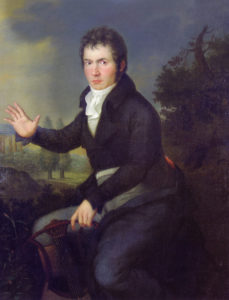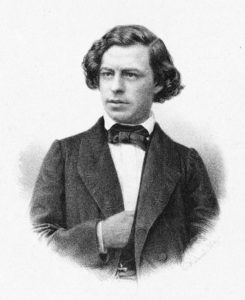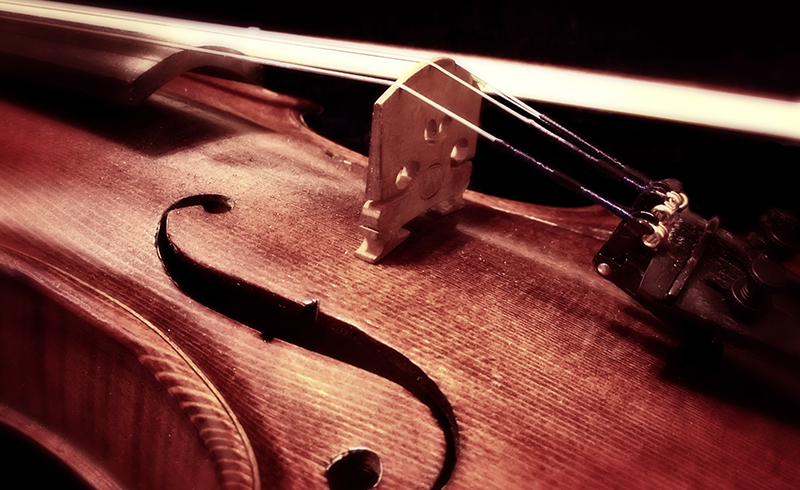On March 15, 16 and 17, classical superstar Joshua Bell returns to the Houston Symphony to play/conduct an all-Beethoven program. In this post, discover Beethoven’s one-and-only Violin Concerto, one of his most deeply-felt and satisfying masterpieces. Get tickets and more information here.

In 1794, the 14-year-old prodigy Franz Clement was already long-established as one of Vienna’s reigning violin virtuosos. That year he acquired a new admirer, an up-and-coming pianist and composer from the Rhineland: Ludwig van Beethoven. Beethoven was so taken with Clement’s playing that he declared to him that “Nature and art vie with each other in making you a great artist.”
The two musicians established a friendly professional relationship, which would ultimately yield a masterpiece twelve years later. 1806 was a busy year for Beethoven; throughout it he worked on his opera Fidelio and completed his Fourth Piano Concerto, Fourth Symphony and the three “Razumovsky” string quartets, among other works. Astonishingly, he also managed to compose a violin concerto for Clement just before the New Year.
A Long Road to the Standard Repertoire
Details of the work’s genesis are sketchy, but it seems likely that the concerto was hurriedly composed over the course of about a month leading up to its premiere at a concert on December 23, which also included works by Mozart, Handel, Cherubini and Méhul, plus “a Sonata on one string with the violin turned upside-down.” According to Beethoven’s student Czerny, Beethoven completed the concerto only two days before the concert, and Clement was effectively sight reading at the premiere. This may account for Beethoven’s punning inscription on his manuscript: “Concerto par Clemenza pour Clement” (“Concerto by Clemency for Clement”).
Despite these circumstances, one critic reported that the concerto “was received with much approbation” and Clement’s playing was “greeted by deafening applause.” Even so, he went on to criticize the piece as strange and overly complex, saying “The music could soon fail to please anyone not completely familiar with the rules and difficulties of the art.” Such complaints were often leveled at Beethoven by contemporary critics, who were often initially dumbfounded by his innovative musical ideas.

Though Clement would perform the concerto several more times throughout his life, the work soon faded into obscurity. Part of its fate was due in part to Clement’s own declining fortunes; during a tour of Russia in 1811, he was arrested as a suspected spy, and during his imprisonment he lost his official posts in Vienna. As time progressed, his style of playing, prized for its “elegance and grace,” fell out of fashion as showier virtuosos took his place, and he ultimately died impoverished and forgotten in 1842.
A few other violinists played the concerto in the decades following its creation, but it only entered the standard violin repertoire after a remarkable performance in 1844 by the 12-year-old prodigy Joseph Joachim in London with Felix Mendelssohn conducting. Throughout his long and storied career, Joachim made Beethoven’s concerto a signature piece, and soon violinists everywhere began to play it. Joachim would also write several concertos of his own and inspire his long-time friend Johannes Brahms to compose one as well.
The Music
Despite its apparently rushed creation, the concerto is one of Beethoven’s most transcendent works. Perhaps in response to Clement’s style of playing, Beethoven eschewed flashy technical feats in favor of simple yet deeply-felt melodies woven into a truly symphonic structure. Increasingly, Beethoven’s contemporaries composed concertos that strung together a series of tunes with long, etude-like passages that mainly existed to give the soloist an opportunity to show off. While Beethoven’s concerto does contain many difficult passages for the soloist, they are always integrated into the symphonic argument and heighten the expressive effect of the music.
Before the soloist enters, the first movement begins with a substantial orchestral introduction that presents the main musical ideas of the movement:
The opening itself is unprecedented: five unaccompanied notes from the timpani, an instrument with implicit military associations. Beethoven was one of the first composers to feature the timpani so prominently, and this simple, pulsing rhythm becomes an important recurring motif. Though the end of 1806 found Austria at peace, the previous year’s defeat at the hands of Napoleon at battle of Austerlitz still hung over Vienna, and war continued to rage to the north in Prussia. The conflict between this militant five-note motif and more lyrical, pastoral melodies (often based on ascending scales) plays out over the course of the first movement.
The first such melody begins in the woodwinds, but the violins soon take up the timpani’s five-note motif, this time on a dissonant D-sharp. A forceful, terse idea filled with dramatic pauses leads to a second lyrical theme for woodwinds. Astute listeners will notice that beneath this theme’s serene surface, the violins play the pulsing five-note motif as an accompaniment. They then play a shadowy, minor-key variation of the theme themselves. Just as the theme seems to take wing, it stops short, and the violins play the dissonant, D-sharp version of the five-note motif again. A sweeping dialogue between the violins and lower strings concludes the orchestral introduction, dying away as the soloist enters.
The solo violin develops the lyrical themes of the movement until the orchestra responds with the terse, pause-filled theme from the introduction. The lyrical second theme follows, but this time the shadowy, minor-key variation becomes more powerful and brooding. When the soloist reenters, it develops the opening lyrical theme, leading to an affecting new theme in G minor, ominously accompanied by the five-note motif in the horns. After reaching this central moment, the music turns, leading back to a powerful return of the opening ideas. The soloist reprises the lyrical themes of the movement, until the terse, pause-filled theme once again cuts it off; this time, however, it leads to the cadenza, an extended passage for the soloist alone that Clement would have improvised at the premiere. For these performances, all of the concerto’s cadenzas have been composed by Joshua Bell himself. The cadenza ends with a delicate version of the second lyrical theme, and a brief coda concludes the movement.
The slow second movement is the emotional heart of the concerto. Its original structure is a kind of double theme and variations. The movement begins softly with a serene melody in the strings that has a simple, pastoral character, not unlike that of the opening melody of the first movement. The soloist plays two variations on the orchestra’s theme, embellishing it with fragmented ornamentation. It is almost as if the soloist is speaking hesitantly and with great difficulty. After a vehement restatement of the main theme by the orchestra, the solo violin at last introduces a tender new theme of its own. A variation on the orchestra’s theme alternates with a variation on the soloist’s theme, and the movement ends with a brief coda. A cadenza for the soloist then links the second movement to the finale.
The last movement begins with a spirited hunting tune initially played by the soloist on the violin’s lowest string, perhaps in imitation of the sound of hunting horns. This catchy theme continues the pastoral atmosphere of the preceding movements, but in a more popular vein; when the orchestra takes up the theme it prefigures the rustic merry-making of the peasant dance in the third movement of Beethoven’s Pastoral Symphony. This main theme alternates with contrasting episodes, including a beguiling song-like passage in a minor key. After a final cadenza, the hunting theme quietly makes one last return—but in the wrong key, E-flat major, enharmonically the same as the dissonant D-sharps that disturbed the first movement. The music slyly slips back into the home key of D major, at last resolving the dissonance of D-sharp/E-flat with a thrilling conclusion. —Calvin Dotsey
We want to hear from you! Tell us what you think in the comments below.
Don’t miss Joshua Bell performing Beethoven’s Violin Concerto March 15, 16 and 17, 2019! Visit houstonsymphony.org for tickets and more information.



